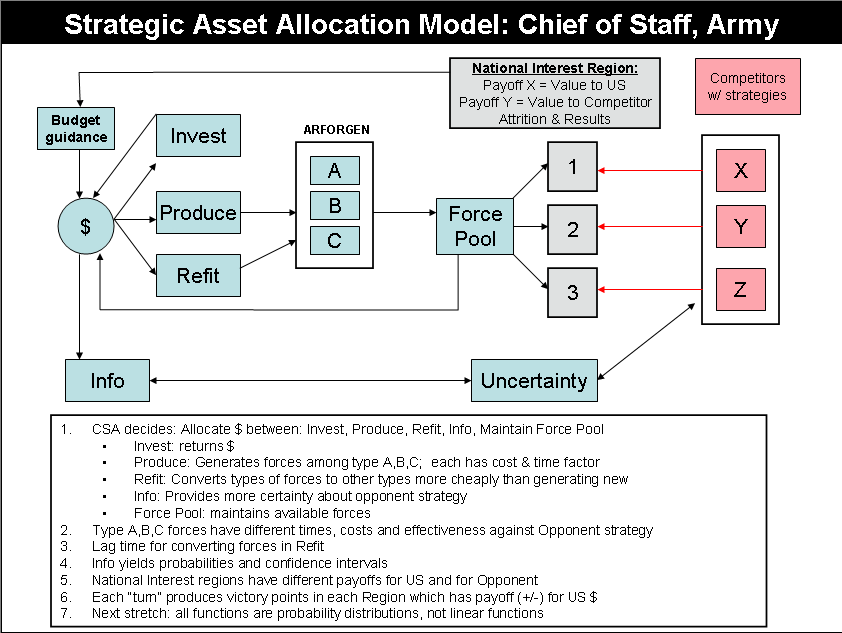I had an opportunity to spend quality time with Mark Prensky, examining the utility of the educational value of games. He made an excellent point that games designed by teachers to be educational are extremely boring when compared with commercially available educational games. It’s as if our children can sense that the teacher’s games are good for them, which eliminates any desire to play them. I strongly recommend you read his book “Don’t bother me mom, I’m learning” available at Amazon.
In a recent force management class examining Planning, Programming, Budgeting, Execution (PPBE) the class and I developed a systems dynamics model for the Chief of Staff of the Army’s decision-making cycle. We wanted to understand collectively the kinds of decisions he made, and the information he required to make those decisions when competing against a thinking, adapting enemy and constrained by a world of uncertainty. Using a whiteboard and based on our preparatory readings, we quickly sketched out the logic model for a Chief of Staff of the Army decision game which you see posted below.
This generated a lot of discussion and mutual understanding. It is an example of the kind of interactive practical exercise that a small group can use to create community knowledge and bring to life an interest to dry material. I strongly recommend the technique, when feasible. It develops the visualization skills that our leaders need to see and then describe the next end state in support of JOPP and MDMP.
We met the lessons terminal learning objectives and we learned a few other things along the way, namely:
- Games are a lot more fun than lecture.
- Systems dynamics models are excellent tools for communicating group understanding.
- The delay between information and action, and between action and results was an important feature of the model, contributing a lot to the dymaics and uncertainty
- The fact that the enemy was thinking and adaptive, and capable of deception put a premium of flexibility, robust sensing and information
- The absence of clut and dried, reliable cause and effect made us aware of the need for alternative points of view and caution
- We created learning that lasted, as evidenced by our ability to reference the process model and later classes.
- Systems models when converted into simulations, allow managers and leaders to practice decision-making under conditions of uncertainty.
- Student after action review comments rated this lesson as one of the best in the entire series because of its interactivity and effectiveness and communicating important information.
I am currently searching for a programmer who can take the process model as outlined in turn that into a web-based individual game that could be played at home or on the web as preparation for this lesson. The concept will be similar to that of the beer game, which is a systems dynamics model that illustrates the complexity of managing a multi-note supply chain. This is been used effectively at MIT in the Army war College already. If you’re interested in that game, you can google it up as long as you are prepared to spend two hours of humbling fun.

